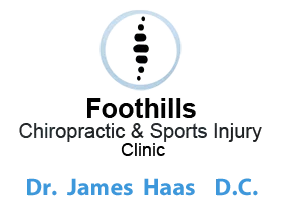Neck Pain Treatment Options
Neck pain is a very common problem. One study estimated that neck pain affects 45% of the working population. Another study estimated that 65% of sitting employees are suffering from some combination of neck, shoulder and upper back pain. Neck pain prevalence, at any one time, is estimated to be 12% for adult women and 9% for adult men in the US population. Neck problems can refer pain to the head, upper back, the shoulder and even down the arm to the hand. Pain that radiates down the arm is known as a cervical radiculopathy. Neck pain is often a residual symptom of trauma due to a sports injury or a motor vehicle accident. Neck pain can be due to osteoarthritis, degenerative disc disease, disc herniations, cervical spinal stenosis, rheumatoid arthritis, tumors, trauma, poor posture and muscle strain.
Chiropractic spinal adjustments are an effective treatment for neck pain. Cervical stretching exercises also help to improve neck pain. Both exercise and spinal manipulation have been shown to improve neck pain better than medications. The most common adverse side effects from spinal manipulation are increased neck pain and headaches. These adverse reactions are usually temporary and resolve without additional intervention. Serious adverse effects of spinal manipulation causing permanent residuals are very rare. This unusually occurs when a patient has some underlying pathology making them vulnerable to injury.
Every treatment intervention has some risks. Some medical procedures have a high risk of complications and others have lower risks of complications. There is a risk of serious complications with cervical manipulation but the risks are very low. In a study published in June of 2015, Thomas M Kosloff et al concluded 'We found no significant association between exposure to chiropractic care and a risk of a VBA stroke. We conclude that manipulation is an unlikely cause of VBA stroke". Ephraim W Church et al published a study in Cureus in February of 2016. The study conclusion was that "there is no convincing evidence to support a causal link between chiropractic manipulation and CAD." A systematic review of reported adverse events published in Spine on May 15th, 2009, showed a wide estimate of the risks of serious adverse events with cervical manipulations. Their review found estimates ranging from as high as 5 strokes for every 100,000 manipulations and estimates as low as 1.46 serious events per 10,000,000 manipulations. The conclusion of this study included the following. "There is no robust data concerning the incidence or prevalence of adverse reactions after chiropractic."
An alternate treatment to spinal manipulation is the use of NSAIDs. This is the most commonly used medical treatment for acute and chronic neck pain in conventional medicine. In 2005, the FDA warned that taking nonsteroidal anti-inflammatory drugs like naproxen and ibuprofen increase the risk of stroke and heart attack. The Lancer published a study that concluded that for every 1000 patients taking a high-dose of ibuprofen or diclofenac for a year, there were 3 additional, avoidable cardiovascular events. One in 1000 of these patients will die as a direct result of taking these NSAIDs. Heart attack and stroke risks increase with just a few weeks of NSAID use. NSAIDs increase blood pressure and can lead to kidney damage. Another study published in Lancet concluded that heart failure risks were roughly doubled by all NSAIDs. NSAIDs have long been know to contribute to gastrointestinal problems such as ulcers. A report published in the Anuals of Rheumatology concluded that " NSAIDs are effective for spinal pain, but the magnitude of the difference in outcomes between intervention and placebo groups is not clinically important. At present, there ar no simple analgesics that provide clinically important effects for spinal pain over placebo,"
"Muscle relaxers" such as Skelaxin or Metaxalone are part of standard medical care for neck pain. Unfortunately these "muscle relaxers" have no direct affect on the action of the contractile mechanism of the striated muscle, the nerve fiber, or the motor end plate. In fact, we really don't even know for sure how how Skelaxin effects the body but it is thought to act as a central nervous system depressant. Serotonin sydrome is a potentially life threatening condition associated with Skelaxin. "Muscle relaxers" slow reflexes, impair balance, increase dizziness and increase the risk of injuries. Some studies have concluded that the risks associated with "muscle relaxers" outweigh their perceived benefits. The bottle labeling on "muscle relaxers" cautions against driving and using heavy machinery while under the influence of these drugs.
Another common medical treatment of neck pain is prescriptiion opioids such as OxyContin and Vicodin. Opioids result in addiction, over-dose deaths, motor vehicle accidents, and shattered lives. A study, in Colorado, found that 80 percent of heroin addicts progressed to heroin from perscription narcotics. Many times this resulted after their medical doctor finally refused to renew their presciption narcotic.They were addicted to prescription pain killers and resorted to heroin when they could no longer get a legal fix. Prescription opioid abuse has a severe economic impact. It is estimated that the nonmedical use of opioid pain relieves costs insurance companies up to $72.5 billion each year. In 2010, 82 percent of all unintentional deaths from prescription drugs was due to opioids. In 2010, opioid pain relievers caused 16,490 unintentional deaths. Prescription opioid pain relievers are often used by people as a recreational drug. In 2012, over 5% of all Americans over the age of 12 used opioids for non-medical purposes. We are just now waking up to the terrible consequenses of exccesive prescription pain medications.
All treatments for neck pain have some risk. Some common treatments present a low incidence of adverse side effects and others have a high incidence of adverse effects. It is important that patients consult with their doctors and understand the risks associated with their care. You should compare the risks and the benefits of treatment options and make informed decisions.
http://annals.org/aim/article/1033256/spinal-manipulation-medication-home-exercise-advice-acute-subacute-neck-pain http://annals.org/aim/article/715285/manual-therapy-physical-therapy-continued-care-general-practitioner-patients-neck https://www.ncbi.nlm.nih.gov/pmc/articles/PMC4794386/ https://www.spine-health.com/treatment/pain-medication/potential-risks-and-complications-nsaids https://www.forbes.com/sites/johnlamattina/2013/06/01/the-fdas-dilemma-about-ibuprofen-and-cardiovascular-risk/#450990bb1c56 https://www.fda.gov/ForConsumers/ConsumerUpdates/ucm453610.htm https://www.painnewsnetwork.org/stories/2017/2/7/ibuprofen-no-better-than-placebo-for-back-pain https://www.health.harvard.edu/blog/fda-strengthens-warning-that-nsaids-increase-heart-attack-and-stroke-risk-201507138138 http://www.thelancet.com/journals/lancet/article/PIIS0140-6736(13)60900-9/abstract https://chiromt.biomedcentral.com/articles/10.1186/1746-1340-18-22 http://stroke.ahajournals.org/content/45/10/3155 http://journals.lww.com/spinejournal/Abstract/2009/05150/Safety_of_Chiropractic_Interventions__A_Systematic.26.aspx https://livertox.nlm.nih.gov/Metaxalone.htm https://www.drugabuse.gov/about-nida/legislative-activities/testimony-to-congress/2016/americas-addiction-to-opioids-heroin-prescription-drug-abuse